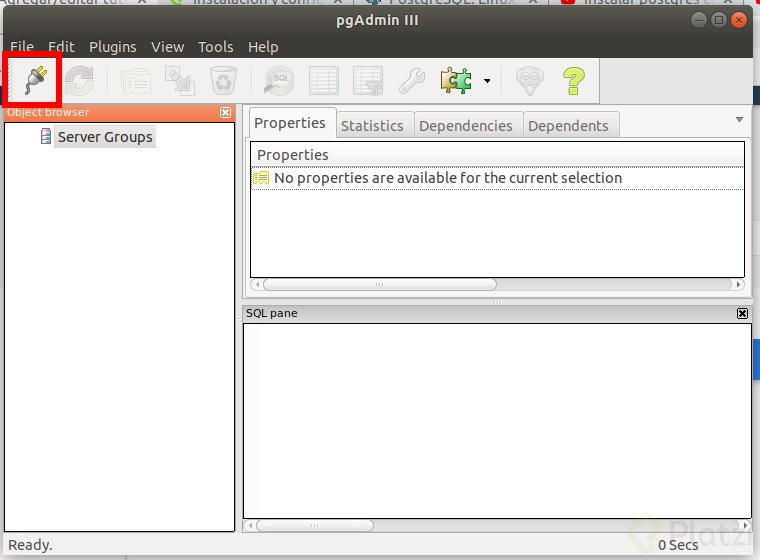
postgres = # SELECT usename FROM pg_catalog. If you have rights to query from pg_catalog at least, which shouldn't be a problem if you use the default postgres user.

If you rather take the SQL route over the meta-command there is an option too. Postgres | Superuser, Create role, Create DB, Replication, Bypass RLS | With du being short for "display users" I imagine. Once you get in the Postgres shell you can use the \du meta-command to show the existing PostgreSQL users. In the mean time you can probably switch to the postgres user with a command like sudo su postgres. If this throws an error with the message psql: error: FATAL: role "." does not exist you probably haven't yet created a database role for the operating system user you are logged in as. You can start the interactive PostgreSQL terminal with the psql on the command line. This article has explained all essential methods to show the detail of users in PostgreSQL.Listing all the users of a PostgreSQL database is easiest via the interactive terminal. Or you can use the “ pg_catolg.pg_user” with the collaboration of the “SELECT” statement to show the users via pgAdmin.

We have to utilize the simple du command. Run the “\du” and “\du+” statements from the SQL Shell(psql) to show the list of users along with their attributes and descriptions. To list all the current existing users in your PostgreSQL shell is quite easy. It is all about the guidelines of PostgreSQL.
#List user postgres password
passwd: user can specify the password in text format. 6 Answers Sorted by: 49 You can query the system catalog with a recursive query, in particular pgauthmembers: WITH RECURSIVE cte AS ( SELECT oid FROM pgroles WHERE rolname 'maxwell' UNION ALL SELECT m.roleid FROM cte JOIN pgauthmembers m ON m.member cte. userepl: refers that the user can initialize replication or not via the boolean value. usesuper: represent that the user is a superuser or not via a boolean value. postgres l List of databases Name Owner Encoding Collate Ctype. usecreatedb: identify the possibility of creating a database through boolean variables (true or false). psql -U postgres -W -p 5432 -h localhost Password for user postgres: psql. You can view a list of users using flyctl : fly postgres users list. usesysid: specify the unique identification of users. repluser - this is the user replica servers use for replication from the leader. usename: it contains the name of users (postgres is the default database of PostgreSQL). The above query retrieved a result set having eight users whose names are given in the “ usename” column. The “ SELECT” statement is utilized to get all the user information from the database through “ pg_catolog.pg_user”: Let’s run the below-given query to show the list of users in Postgres via pgAdmin: SELECT * FROM pg_catalog.pg_user To show the list of users on the specified database, select the “ Query Tool” option as given below.įor this, a “ Query” window is displayed on which the user can execute any statement. The pgAdmin facilitates easiness to the users through the graphical representation. Method 2: Show Users in PostgreSQL via pgAdmin This way, you can get the list of users with or without a description using the SQL SHELL.

For displaying the description of the role, the below statement can be utilized: \du+ Įxecuting the above statement will display additional information about the user’s roles: The above “ \du” statement is utilized to show the list of all the users/roles in the selected database:įrom the output, users can clearly notice that the “\du” command retrieves the list of users. Open the SQL, provide the login information, and to display the list of users, execute the statement provided below: \du postgres- Enter \du command to list all users in PostrgeSQL. psql -U postgres You will be prompted for password. Using psql command Log into PostgreSQL using postgres user. The key word PUBLIC indicates that the privileges are to be granted to all roles, including those that might be created later. There are two ways to list all users in PostgreSQL using psql command and using SQL queries.

These privileges are added to those already granted, if any. Method 1: Show Users in PostgreSQL via SQL Shell This variant of the GRANT command gives specific privileges on a database object to one or more roles. Method 2: Show Users in PostgreSQL via pg Admin.Method 1: Show Users in PostgreSQL via SQL Shell.
#List user postgres how to
This write-up will teach you how to show users in Postgres via the below-listed methods: To deal with such situations, PostgreSQL provides the “\du” and “\du+” statements that are used to show the list of users along with their attributes and descriptions. In certain situations, it is difficult to find the user’s roles and privileges. In PostgreSQL, each user has their own specific role in managing operations in the database.


 0 kommentar(er)
0 kommentar(er)
